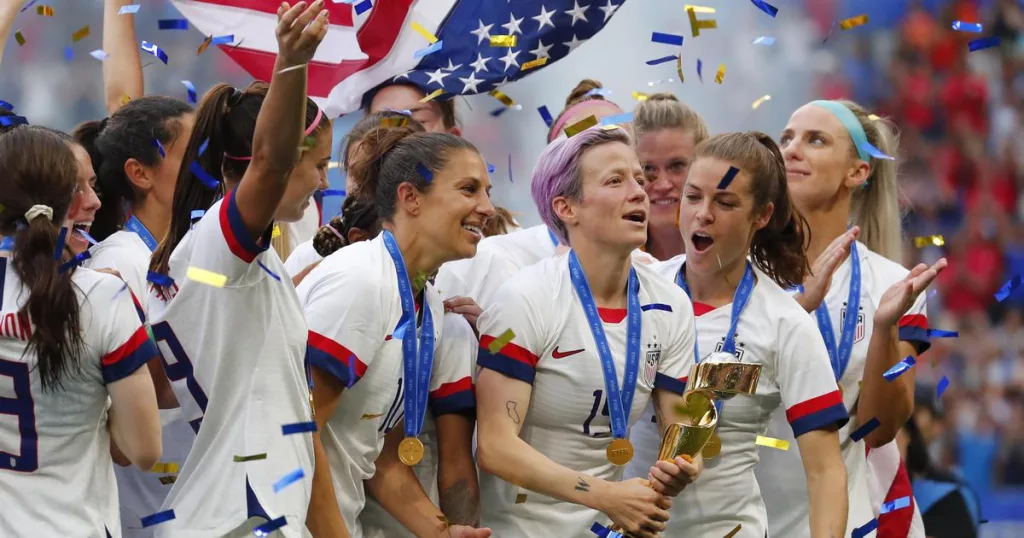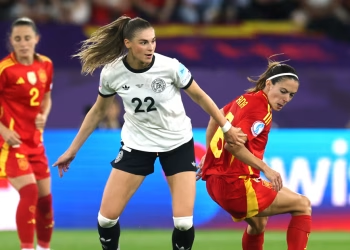In a momentous announcement that’s set to reshape the landscape of women’s football, FIFA President Gianni Infantino has confirmed that the United Kingdom will host the 2035 FIFA Women’s World Cup. This revelation isn’t just another sporting event—it’s a testament to the growing global recognition and support for women’s football.
Table of Contents
The Evolution of Women’s Football: A Journey of Empowerment

The road to this landmark moment has been long and challenging. Women’s football has transformed from a marginalized sport to a global phenomenon, breaking barriers and challenging stereotypes. Just decades ago, women’s football was barely recognized, with many countries prohibiting women from playing the sport professionally. Today, it stands as a powerful symbol of gender equality and athletic excellence.
The Bid That Stood Alone
What makes this announcement truly remarkable is the unique circumstances surrounding the bid. In an unprecedented turn of events, the UK emerged as the sole valid candidate for hosting the 2035 tournament. The bid is a collaborative effort, uniting the football associations of England, Scotland, Wales, and Northern Ireland in a powerful display of national solidarity.
A Strategic Vision for Women’s Football
Infantino’s announcement goes beyond just selecting a host nation. During a UEFA congress meeting, he outlined an ambitious vision for the future of women’s football:
- Expansion of Tournament Format: FIFA plans to increase the number of teams from 32 to 48 by 2031, dramatically increasing global representation.
- Strategic Host Selection: The United States is set to host the 2031 edition, with the UK taking the reins in 2035.
- Investment in Infrastructure: Commitment to developing women’s football infrastructure globally.
- Equal Opportunities: Continued push for equal funding, media coverage, and support for women’s football.
The Economic Impact of Women’s Football
The tournament represents more than just a sporting event—it’s a significant economic opportunity. Recent studies have shown that women’s football is experiencing exponential growth:
- Sponsorship Growth: Sponsorship deals for women’s football have increased by over 300% in the past decade.
- Broadcast Revenues: Media rights for women’s football tournaments have seen unprecedented interest from global broadcasters.
- Fan Engagement: Social media following for women’s football teams has grown by millions, indicating a massive global fan base.
The Journey to 2035: Context and Significance

The road to this moment has been paved with significant milestones. The 2023 Women’s World Cup in Australia and New Zealand marked a turning point, with the tournament expanding from 24 to 32 teams. England’s Lionesses, though narrowly losing the final to Spain 1-0 in Sydney, demonstrated the growing competitive spirit and global appeal of women’s football.
What This Means for Women’s Sports
Mark Bullingham, CEO of the Football Association, captured the sentiment perfectly: “We are honoured to be the sole bidder for the FIFA Women’s World Cup 2035. Hosting the first FIFA World Cup since 1966 with our home nations partners will be very special.”
Key Highlights
- Host Nations: United Kingdom (England, Scotland, Wales, Northern Ireland)
- Tournament Year: 2035
- Teams: Expected to expand to 48 teams
- Significance: First major FIFA tournament in the UK since the men’s World Cup in 1966
- Economic Impact: Estimated to generate billions in economic activity
- Global Representation: Increased opportunities for emerging football nations
The Competitive Landscape
Interestingly, potential rival bids from Spain, Portugal, and Morocco were withdrawn, leaving the UK as the uncontested host. This unique situation underscores the strategic importance and logistical challenges of hosting such a massive international tournament.
Looking Ahead: A New Era for Women’s Football

The 2035 FIFA Women’s World Cup represents more than just a sporting event. It’s a powerful statement about the progress of women’s sports, the breaking down of historical barriers, and the increasing global recognition of women athletes.
Preparing for 2035: What to Expect
- State-of-the-Art Stadiums: Renovation and development of world-class football facilities across the UK
- Global Talent Showcase: An opportunity for emerging football talents from around the world
- Cultural Exchange: A celebration of international football and cultural diversity
As we look forward to 2035, one thing is clear: the beautiful game is becoming more inclusive, more competitive, and more exciting than ever before.
FAQ:-
When did FIFA introduce women’s teams?
Women’s World Cup
FIFA’s first officially-recognised women’s international match is France–Netherlands (1971), albeit a retroactive recognition decided in 2003. The first FIFA Women’s World Cup was held in China in November 1991 and won by the United States.
Does Netflix have rights to the Women’s World Cup?
Netflix has secured the exclusive broadcast rights in the United States for the 2027 and 2031 editions of the Women’s World Cup. The deal marks the first time the Women’s World Cup will be broadcast on a streaming service. The value of the deal has not been disclosed but FIFA has described it as “landmark”.








